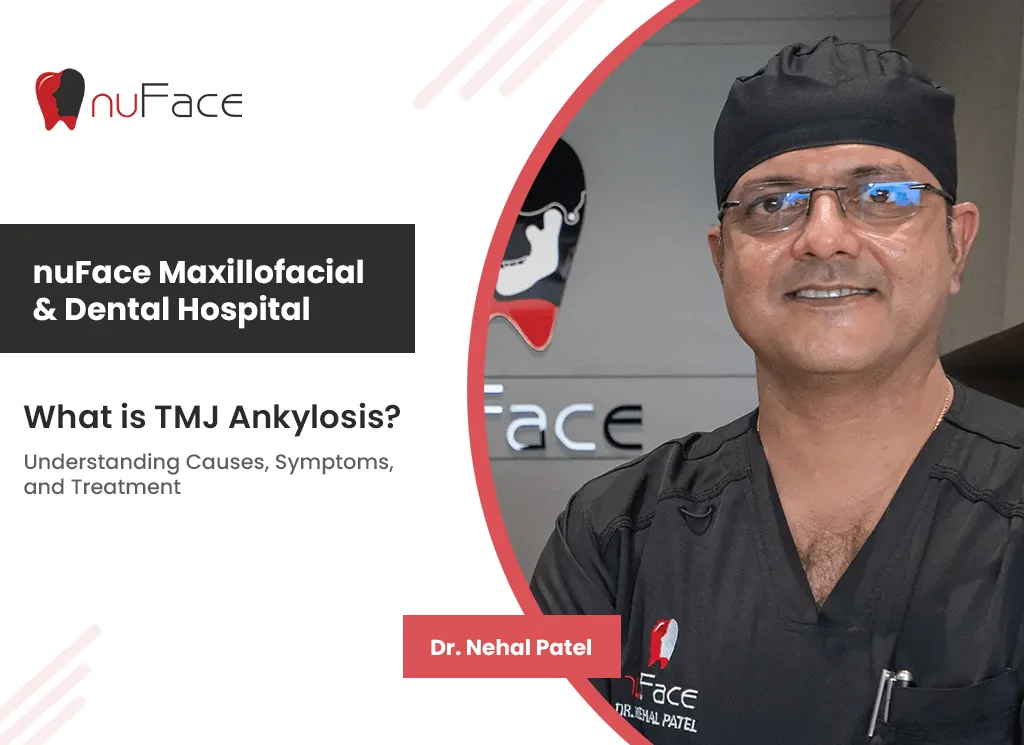Understanding Causes, Symptoms, and Treatment
TMJ Ankylosis, a condition that limits or completely restricts the movement of the jaw, is a serious and often debilitating disorder affecting the temporomandibular joint (TMJ).
This joint, located near the base of the skull, plays a crucial role in facilitating functions like talking, chewing, and even breathing. TMJ Ankylosis occurs when the joint becomes fused due to abnormal bone or fibrous tissue growth, leading to stiffness, pain, and functional impairment.
This article will provide a comprehensive overview of TMJ Ankylosis, its causes, symptoms, treatment options, and its impact on a patient’s quality of life.
What is TMJ Ankylosis?
Temporomandibular Joint Ankylosis is a pathological condition characterized by the restriction of jaw movement.
Ankylosis, in medical terms, refers to the fusion of bones, and when it occurs in the temporomandibular joint, it impairs the joint’s ability to move normally. The fusion can be partial or complete, and it may occur on one or both sides of the jaw (unilateral or bilateral).
The severity of the condition depends on the extent of fusion, with some patients experiencing minor stiffness while others endure complete immobility of the jaw.
Causes of TMJ Ankylosis
TMJ Ankylosis can develop due to several underlying causes, most of which involve trauma, infection, or diseases that affect the joint. Understanding the root cause is essential for both diagnosis and treatment. Below are the primary factors contributing to TMJ Ankylosis:
- Trauma
Facial Trauma is the leading cause of TMJ Ankylosis, often resulting from fractures in the jaw or condyle (the rounded end of the jaw bone that fits into the TMJ). These injuries can lead to bleeding in the joint space, which, if untreated, can result in the formation of fibrous or bony ankylosis over time. Road accidents, falls, sports injuries, and physical altercations are common sources of such trauma. - Infections
Certain infections can directly affect the TMJ and lead to ankylosis. For instance, infections in the middle ear or mastoid (the area of the skull located behind the ear) can spread to the TMJ, leading to inflammation and eventual joint fusion. Similarly, systemic infections like tuberculosis or osteomyelitis (bone infection) can also affect the joint, causing scarring or ossification. - Inflammatory Joint Diseases
Conditions such as rheumatoid arthritis and ankylosing spondylitis are known to cause joint inflammation and degradation. Chronic inflammation in the TMJ due to these diseases can lead to fibrosis or the fusion of bones, causing ankylosis. In these cases, the condition tends to develop slowly but progressively limits jaw movement. - Congenital or Developmental Disorders
Some patients may develop TMJ Ankylosis due to congenital abnormalities. In these cases, children may present with restricted jaw movement from an early age. This can severely impact their ability to eat and speak, and it can also affect facial growth, leading to asymmetry. - Surgical Complications
In rare cases, surgical procedures involving the jaw or ear may lead to TMJ Ankylosis if not performed carefully. For example, improper management of TMJ fractures during surgery can cause the formation of abnormal bone or scar tissue that fuses the joint.
Symptoms of TMJ Ankylosis
The symptoms of TMJ Ankylosis vary depending on whether the condition is partial or complete and whether it is unilateral or bilateral. Common signs and symptoms include:
- Restricted Jaw Movement
The most noticeable symptom of TMJ Ankylosis is difficulty opening or closing the mouth. In severe cases, patients may experience complete immobility of the jaw, making it impossible to eat, speak, or perform other essential functions. - Pain and Discomfort
Patients with TMJ Ankylosis often experience pain in the jaw joint, especially when attempting to move it. The pain may extend to the ear, neck, and temple areas due to the close proximity of these structures. - Facial Asymmetry
In cases of unilateral ankylosis (affecting one side of the jaw), patients may develop facial asymmetry due to the uneven growth and movement of the jaw. This is particularly common in children, where the affected side of the jaw fails to grow properly, leading to a crooked appearance. - Difficulty Chewing and Speaking
As jaw movement becomes restricted, patients struggle with basic activities like chewing food and speaking clearly. This can lead to significant weight loss, malnutrition, and social anxiety. - Headaches and Earaches
TMJ Ankylosis can cause chronic headaches and earaches due to the strain placed on the surrounding muscles and nerves. These symptoms are often mistaken for other conditions, making diagnosis challenging.
Diagnosis of TMJ Ankylosis
A thorough medical examination and diagnostic imaging are essential for accurately diagnosing TMJ Ankylosis. Here are the standard procedures used:
- Physical Examination
The doctor will assess the patient’s ability to open and close their mouth, as well as check for pain, tenderness, or abnormal sounds in the joint. - Imaging
Imaging techniques such as X-rays, CT scans, and MRI are critical in diagnosing TMJ Ankylosis. These tests help visualize the extent of the fusion and the structures involved, allowing for a precise diagnosis.
Treatment Options for TMJ Ankylosis
Impact on Quality of Life
TMJ Ankylosis can significantly affect a patient’s quality of life, particularly when it comes to basic functions like eating, speaking, and social interaction.
The condition can lead to malnutrition, weight loss, and psychological distress due to pain, disfigurement, and difficulty communicating.
Early diagnosis and treatment are critical in preventing the long-term complications of TMJ Ankylosis, especially in children, where the condition can interfere with normal growth and development.
Treatment for TMJ Ankylosis depends on the severity of the condition and the underlying cause. Surgical intervention is often required, but non-surgical treatments may be used in milder cases. Below are the primary treatment options:
- Surgery
Surgery is the most common and effective treatment for TMJ Ankylosis, especially in cases of complete fusion. The type of surgery depends on the extent of the ankylosis and the patient’s needs.- Gap Arthroplasty:
This procedure involves removing the fused bone or tissue and creating a gap between the remaining bone ends to restore mobility. - Interpositional Arthroplasty:
In this procedure, a gap is created, and a material, such as fat, cartilage, or synthetic material, is placed between the bone ends to prevent re-ankylosis. - Total Joint Replacement:
In severe cases, the entire joint may need to be replaced with a prosthetic TMJ.
- Gap Arthroplasty:
- Physical Therapy
Post-surgical physical therapy is essential to maintain the mobility of the joint and prevent scar tissue formation. Exercises focus on stretching and strengthening the jaw muscles to restore normal function. - Pain Management
In cases of mild ankylosis or as part of post-surgical care, pain management through medications such as anti-inflammatories and muscle relaxants may be recommended. - Orthodontic Treatment
In cases where ankylosis affects facial growth or teeth alignment, orthodontic treatment may be necessary to correct malocclusion and improve aesthetics.
TMJ Ankylosis is a complex and often debilitating condition that requires timely intervention to restore jaw function and improve the patient’s quality of life.
With advances in surgical techniques and comprehensive rehabilitation, many patients can regain normal jaw movement and alleviate symptoms like pain and discomfort.
If you or someone you know is experiencing symptoms of TMJ Ankylosis, consult a maxillofacial surgeon to explore the best treatment options.






